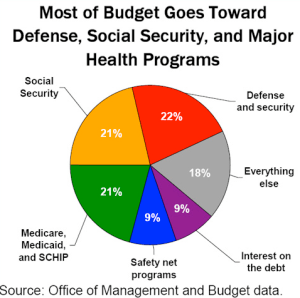
States Contributing to Medicaid and Medicare Savings
Many elderly and disabled low-income Americans qualify for both Medicare and Medicaid coverage. They are referred to as dual eligible.
Medicare, which was created to provide medical coverage for seniors and people with disabilities has 37 million enrollees. Medicaid, which was created to provide medical coverage for the poor has 51 million. There are currently 9.6 million people who are dual-eligible and the number is rising.
“As baby boomers celebrate their 65th birthdays, we see an estimated 10,000 individuals becoming eligible for Medicare-covered services each day,” reports a Kindred Healthcare article. Many will qualify as dual eligible.
The problem is, dual-eligible enrollees are expensive for both Medicare and Medicaid.
“As a group, dual eligibles comprise 15% of all Medicaid enrollees but account for nearly 40% of all costs,” according to a PEW Charitable Trust article, “For Medicare, they represent 20% of all enrollees and more than 30% of costs.”
Medicare and Medicaid don’t coordinate services and have no incentive to try and save each other money – so they don’t. Worse yet, it’s often patients who suffer.
Traditionally, Medicare pays for prescriptions, hospital services and short-term nursing home stays. Medicaid pays for nursing home stays beyond 90 days and long-term home care, as well as dental care and transportation to and from medical care services.
It has been up to the dual-eligible enrollees, those with the highest need and least ability, to navigate the complicated system.
And, it’s not just a financial issue. Neither Medicare nor Medicaid focuses on preventive care, which would proactively enhance the overall health of patients and reduce spending on costly hospital visits.
Dual-eligible enrollees experience higher rates of potentially preventable hospitalizations than those with either Medicare or Medicaid coverage alone.
- Twice as often for pressure ulcers, asthma and diabetes.
- Fifty-two percent higher for urinary tract infection.
- More than 30% higher for chronic obstructive pulmonary disease and bacterial pneumonia.
As many as 40% of nursing home hospitalizations could have potentially been avoided if proper care was provided, according to the Urban Institute. Not only do these situations cause hardships that could have been avoided, trips between hospital and nursing home can also be very expensive.
And the cost is not just a problem for dual-eligible enrollees.
 “Experts believe that misaligned financial incentives in the two programs have cost states and the federal government billions of dollars,” according to PEW. Medicaid and Medicare savings could be significant with these services being coordinated.
“Experts believe that misaligned financial incentives in the two programs have cost states and the federal government billions of dollars,” according to PEW. Medicaid and Medicare savings could be significant with these services being coordinated.
The financial disconnect between Medicare and Medicaid leaves many unsure of what services are covered by which program. As an initiative to eliminate this issue, two test programs are being implemented in several states willing to participate in this push for change.
The first program, the Capitated Model, combines a state, the Centers for Medicare and Medicaid Services (CMS) and a health plan into a contract together to provide comprehensive, coordinated care. The state and CMS then pay the health plan a capitation payment – a prospective payment determined by the number of enrollees.
The second program, the Managed Fee-For-Service (FFS) Model, encompasses a state and CMS into an agreement that implements Medicaid and Medicare savings while improving the quality of care. The state is also able to benefit from a portion of these savings.
Eleven states have contracted to join the Financial Alignment Initiative: California, Colorado, Illinois, Massachusetts, Michigan, New York, Ohio, South Carolina, Texas, Virginia and Washington.
Connecticut, Hawaii, North Carolina, Oklahoma and Rhode Island have proposals to join the initiative still pending with CMS.
With change comes challenge – some of which certain states were not able to surpass. Eight states that were initially eager to join the initiative, have withdrawn their proposals to participate. These states include Arizona, Idaho, Iowa, Missouri, New Mexico, Tennessee, Wisconsin and Vermont.
The progressive momentum is still heading in the right direction, with the pending states anticipated to start the initiative in early 2015.
General Medicine, The Post-Hospitalist Company is dedicated to reducing hospital readmission rates and improving preventive care. Contact us today to learn how our post-hospitalists can help improve your long-term care facility.
- How Post-Hospitalists Decrease Health Care Spending - 06-24-2015
- Top Reasons for Hospital Readmissions from SNFs - 06-03-2015
- The Real Cost of Hospital Readmission Rates - 05-20-2015